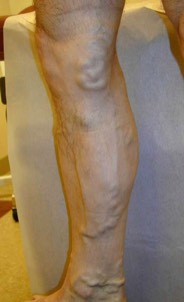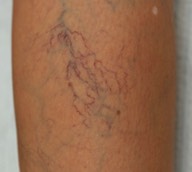Veins and arteries are everywhere. Arteries are thicker, high pressure tubes that help propel blood and oxygen from the heart to the muscles, organs, and cells of the body. Once that task is accomplished, the blood collects into a network of thinner walled veins for a slow trip back to the heart, and another circuit around the body. When blood collects too long in these thin walled veins, they begin to distend, pooling more blood. When we see large, discoloured clumps of oversized veins, we call them ‘varicose veins’.



